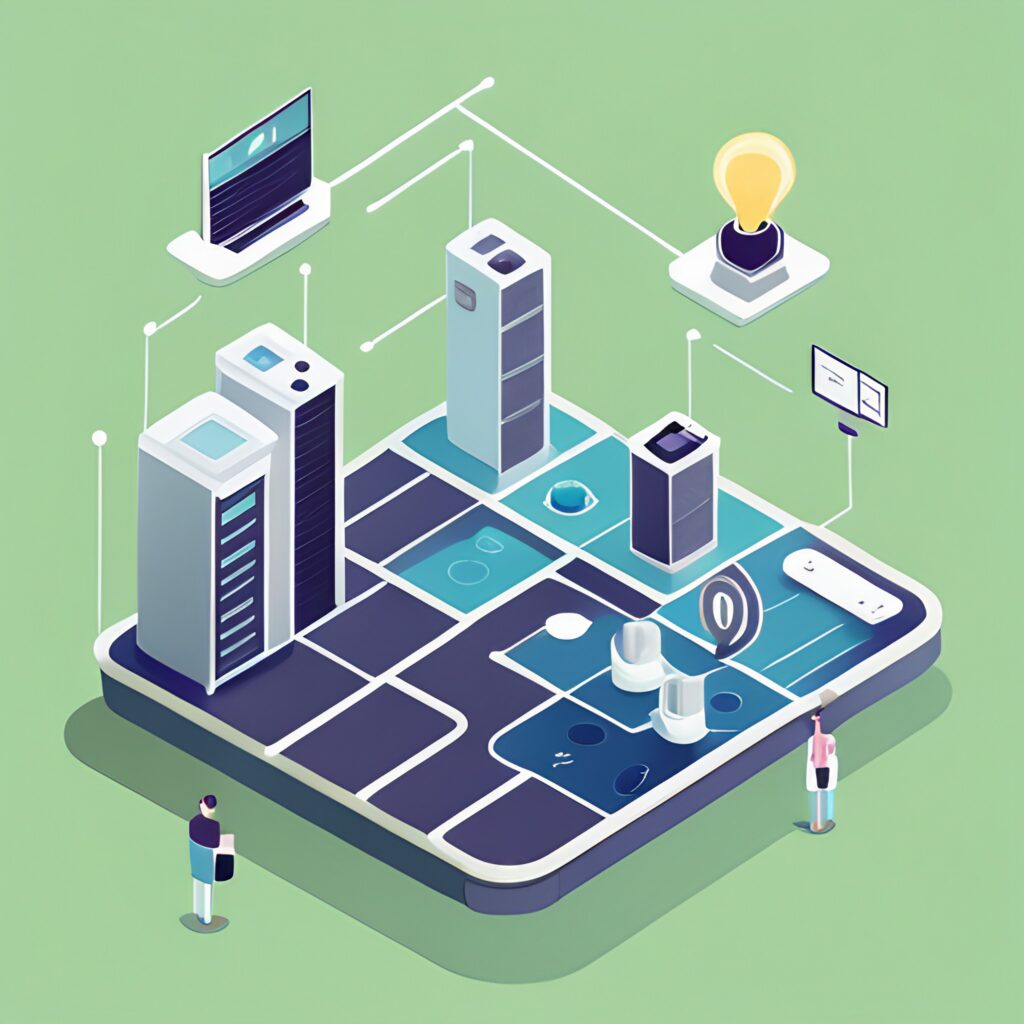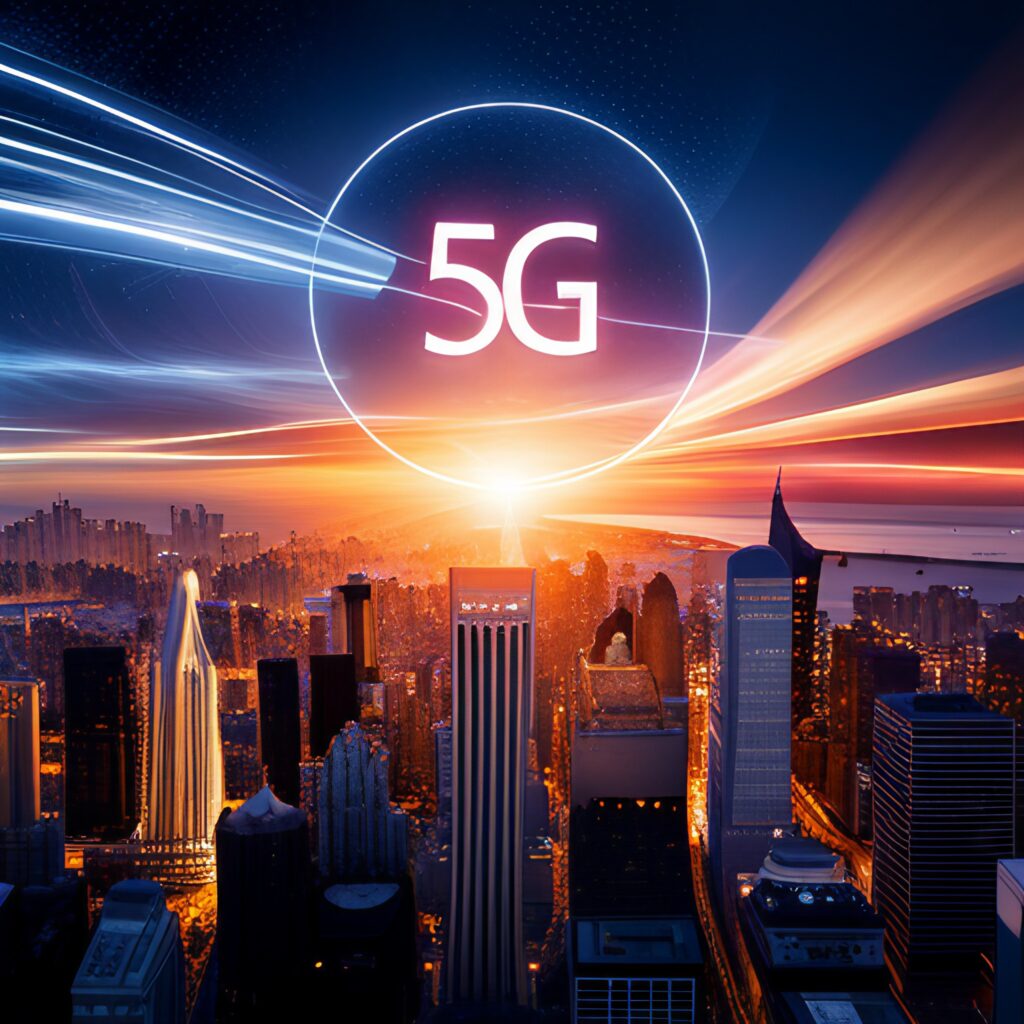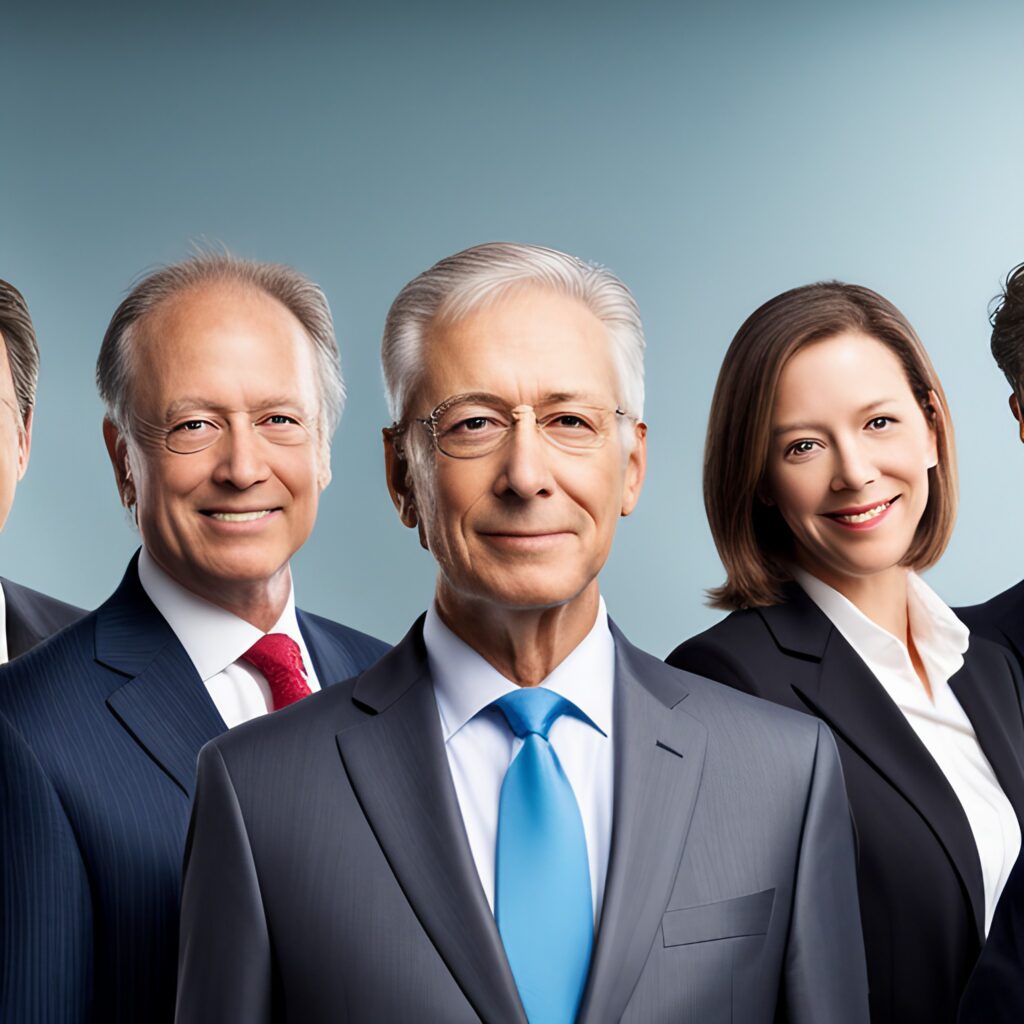In an era defined by digital metamorphosis, the Internet of Things (IoT) stands as the quintessential architect redefining the landscapes of business. For C-suite executives and technology innovators, understanding the pivotal role of IoT in digital transformation is not just a matter of foresight but a strategic imperative.
The existential question is no longer if but how the C-suite should harness IoT to craft sustainable competitive advantages and propel their enterprises into the future. This probing discourse aims to illuminate the path ahead, taking inspiration from groundbreaking implementations of IoT in various sectors.
Executive Summary
In the rapidly evolving digital landscape, the Internet of Things (IoT) emerges as a critical driver of digital transformation, influencing how businesses operate and compete. For Chief Executive Officers (CEOs), Chief Technology Officers (CTOs), and other C-suite executives, the integration of IoT into digital transformation strategies is imperative to achieving a sustainable competitive advantage. This article outlines the multifaceted ways in which IoT technologies—ranging from IoT devices, sensors, and systems to smart devices and industrial IoT devices—redefine business processes, enhance decision-making, and open up new business models.
Digital transformation efforts, spearheaded by IoT initiatives, enable businesses to leverage data collected through smart objects and devices, fostering innovation in areas such as supply chain management, customer experience, and operational efficiency. By integrating IoT device management, businesses can effectively control and monitor smart devices, ensure seamless communication via different IoT protocols, and harness the power of machine learning and artificial intelligence to process data for predictive maintenance and enhanced business outcomes.
Furthermore, the inclusion of IoT in digital transformation initiatives empowers organizations to transcend legacy technologies, addressing rising customer demands and the constant pressure to innovate. C-level executives, including Chief Human Resources Officers (CHROs) and Chief Information Officers (CIOs), play a crucial role in fostering an organizational culture receptive to digital technologies, ensuring the seamless adoption of IoT systems, and leveraging them to drive business strategy and value.
Investing in IoT not only equips businesses to improve energy consumption and operational efficiency but also to pioneer new models of customer engagement and service delivery. From smart buildings and consumer IoT devices to advanced applications in farming and industrial sectors, IoT technologies prompt a reexamination of traditional business models and encourage the pursuit of transformational growth and efficiency.
As technology leaders allocate investment dollars towards IoT platforms and ecosystems, the collaboration amongst C-suite officers, engineers, and cross-functional teams becomes vital for integrating IoT applications into the fabric of business operations. This cohesive strategy ensures that organizations not only meet the current digital demands but also shape the future of innovation and competition in their respective industries.
Unveiling the Internet of Things (IoT)
At its core, the Internet of Things (IoT) represents the interconnectedness of physical objects via the internet, encompassing a broad spectrum of devices – from simple sensors to smartphones and wearables to complex machinery. These devices collect and exchange data, making it possible to monitor, control, and analyze an array of parameters in real-time. IoT’s strength lies in its ability to provide deep, actionable insights into both operational and customer behavior, enabling businesses to optimize processes, enhance productivity, and innovate services.
Transforming the Business World with IoT
The impact of IoT on the modern business landscape is profound and multifaceted. Its influence stretches across numerous sectors, including manufacturing, healthcare, agriculture, and retail, revolutionizing traditional practices and strategies:
- Operational Efficiency: IoT devices facilitate a level of automation and monitoring previously deemed unattainable. In manufacturing, for instance, sensors can predict equipment failures before they occur, significantly reducing downtime and maintenance costs.
- Customer Insights: By integrating IoT with analytics, businesses can garner unparalleled insights into customer habits and preferences. Retailers, for example, use IoT to track shopping behaviors and tailor experiences that boost satisfaction and loyalty.
- Innovative Products and Services: IoT enables the development of new, connected products that respond to consumer needs in real-time, opening up streams of revenue that were once inconceivable. From smart home devices to connected healthcare monitors, the potential for innovation is boundless.
- Sustainable Practices: With the global push towards sustainability, IoT provides the tools needed to monitor and reduce energy consumption, waste, and environmental impact. In agriculture, sensors used to monitor soil moisture and weather conditions can lead to more efficient use of water resources.
By marrying the digital and physical worlds, IoT not only streamlines operational efficiency but also unveils opportunities for customer engagement and innovation that are critical for staying competitive in a rapidly evolving business environment.
The Impact of Digital Transformation on the Business World
Digital transformation represents a fundamental shift in how businesses operate and deliver value to customers. It transcends traditional roles within companies, encouraging a culture of innovation that leverages technology to meet changing consumer expectations. In the context of IoT, digital transformation is particularly impactful, offering a platform for businesses to rethink their strategies and workflows in the face of digital innovation.
- Agility and Adaptability: In the digital era, businesses must be agile enough to respond to rapid market changes and technological advancements. IoT enables companies to become more adaptable, using real-time data to make quick decisions and pivot strategies as necessary.
- Customer-Centric Approaches: The drive towards digital transformation places the customer at the heart of business strategies. IoT plays a crucial role by providing insights into customer behavior, preferences, and feedback, allowing businesses to design personalized experiences that foster loyalty and satisfaction.
- Collaboration and Innovation: Digital transformation breaks down silos within organizations, fostering a culture of collaboration that is essential for innovation. IoT, with its ability to connect disparate devices and systems, facilitates seamless collaboration across departments, enhancing the ability to innovate and develop new solutions.
- Data-Driven Decision Making: At its core, digital transformation is about leveraging data to inform decision-making. IoT devices generate vast amounts of data, offering businesses unprecedented insights into their operations, markets, and customers. This data-driven approach leads to more informed decisions, optimizing performance, and driving growth.
In essence, digital transformation powered by IoT is reshaping the business world, setting a new benchmark for competitiveness, innovation, and customer-centricity. Businesses that recognize and adapt to this shift not only survive but thrive, creating new value propositions that distinguish them in a crowded marketplace.
A Foundation for Innovation and Efficiency
IoT is revolutionizing the very fabric of enterprise operations, providing new levers to bolster efficiency and foster innovation. Consider the retail juggernaut Walmart, which has navigated the complexities of its vast distribution network with a state-of-the-art IoT-enabled inventory management system.
This initiative not only delivers real-time stock level updates but also streamlines logistics, minimizes waste, and elevates the in-store experience for customers. Other pioneering endeavors like Siemens’ predictive maintenance solutions exemplify how IoT can reduce downtime, cut costs, and increase the longevity of machinery.
These case studies underscore the IoT’s formidable capacity to optimize processes, creating a ripple effect that spans from the operational trenches to the boardroom discussions on strategy.
Championing Change from the C-suite
While IoT’s potential is immense, realizing its full value requires more than technological prowess—it demands strategic leadership. For the C-suite, this means championing IoT initiatives that align with the company’s overarching vision and mission.
Executives need to embed IoT into their strategic thinking, considering its implications on revenue models, customer engagement, and overall business prosperity. They must be bold visionaries, spearheading IoT adoption as not just an operational upgrade but a cultural shift towards a more connected and intelligent enterprise.
C-suite buy-in can catalyze a domino effect, cascading a clear mandate and resources for IoT projects. For inspiration, one need look no further than the serene streets of Barcelona, where ‘smart city’ initiatives have redefined the urban experience, all under the careful guidance of forward-thinking city leadership.
The CEO’s Crucial Role in IoT-Driven Digital Transformation
At the heart of IoT-driven transformation lies the Chief Executive Officer (CEO), whose leadership is pivotal in setting the stage for a company’s digital future. The CEO’s role transcends traditional boundaries, requiring not only a vision for how IoT can be integrated into the fabric of the company but also the acumen to drive this vision forward.
For the CEO, the adoption of IoT is a strategic endeavor that necessitates a holistic view of both the opportunities and challenges it presents. This involves fostering an organizational culture that is agile, innovative, and receptive to change. By championing IoT, CEOs can lead their companies in reshaping industries, creating new value propositions, and defining novel business models.
The CEO’s commitment to IoT signals to employees, shareholders, and customers alike that the company is serious about its digital future. This leadership stance is essential in marshaling the necessary resources, talent, and mindset to leverage IoT effectively. Furthermore, by personally engaging with IoT projects, CEOs can ensure that these initiatives are aligned with the company’s broader strategic goals, thereby maximizing their impact and fostering sustainable growth in an increasingly connected world.
The Chief Technology Officer: Spearheading IoT in Digital Transformation
The Chief Technology Officer (CTO) plays a pivotal role in harnessing the power of IoT to fuel digital transformation. Operating at the intersection of technology innovation and business strategy, the CTO is tasked with the technical vision and development necessary to realize IoT’s full potential within the organization. This involves leading the charge in adopting cutting-edge IoT technologies, ensuring that these are seamlessly integrated into the company’s infrastructure, and aligning them with business objectives to drive competitive advantage.
A critical aspect of the CTO’s role is to maintain a proactive stance on emerging IoT technologies and trends, evaluating their relevance and applicability to the company’s needs. By doing so, the CTO ensures that the organization not only keeps pace with technological advancements but also anticipates future digital shifts. Furthermore, the CTO fosters a culture of innovation that encourages experimentation and embraces risk-taking, critical for IoT projects to thrive.
In collaboration with other C-suite leaders, the CTO works to break down silos, facilitating cross-functional teams that leverage IoT to solve complex business challenges. This collaborative approach is essential for developing holistic IoT solutions that enhance operational efficiencies, improve customer experiences, and create new business models. The CTO’s ability to translate technical capabilities into business value is instrumental in positioning IoT as a central pillar of the company’s digital transformation strategy, ensuring its longevity and success in a digitally connected era.
The Chief Human Resources Officer: Catalyzing IoT for Workforce Transformation
The role of the Chief Human Resources Officer (CHRO) in leveraging IoT for digital transformation extends beyond traditional HR functions. By integrating IoT into human resources practices, the CHRO can significantly enhance workforce management and employee engagement. This process involves harnessing IoT technology to streamline HR operations, improve worker safety, and foster a more productive and engaged workplace culture.
An innovative way the CHRO can implement IoT is through smart office designs that monitor and analyze workplace habits and environments. By utilizing sensors and wearables, companies can gain insights into how employees interact with their workspace, leading to adjustments that maximize comfort, efficiency, and well-being. Furthermore, IoT applications can facilitate flexible working arrangements, such as remote work, by ensuring employees remain connected and productive regardless of their physical location.
Another critical aspect lies in using IoT for employee safety and health monitoring. In industries where worker safety is paramount, IoT devices can provide real-time data on environmental conditions, alerting to potential hazards before they become incidents. Additionally, wearable technology can monitor vital signs, alerting to health issues or fatigue, thus preventing accidents and ensuring a healthier workforce.
The CHRO’s strategic deployment of IoT technology underscores a dual focus on operational efficiency and creating a supportive, dynamic employee experience. By championing smart, data-driven HR solutions, the CHRO not only contributes to the company’s digital transformation agenda but also positions HR as a pivotal player in leveraging technology to shape the future of work. This holistic approach ensures that the workforce is prepared, protected, and primed to thrive in an increasingly digital and connected world.
The Chief Information Officer: Enabling IoT to Achieve Digital Transformation
The Chief Information Officer (CIO) plays a fundamental role in facilitating IoT implementation as a means to drive digital transformation across the enterprise. Positioned uniquely at the confluence of technology, data management, and business strategy, the CIO ensures that IoT initiatives are not only technically viable but also aligned with the organization’s overarching digital goals. This involves managing the vast amounts of data generated by IoT devices, safeguarding the security and privacy of this information, and leveraging it to inform strategic decisions.
A key responsibility of the CIO in IoT integration is the development and maintenance of a robust IT infrastructure that can support the complexity and scale of IoT systems. This includes ensuring adequate network capacity, data storage capabilities, and processing power, as well as implementing cutting-edge security measures to protect against cyber threats. By building a resilient IT foundation, the CIO enables seamless IoT connectivity and data flow across various departments, facilitating better insights and operational efficiency.
Additionally, the CIO plays a pivotal role in fostering cross-departmental collaboration, ensuring that IoT projects benefit from the collective expertise within the organization. By working closely with the Chief Technology Officer (CTO), Chief Human Resources Officer (CHRO), and other C-suite executives, the CIO helps to bridge the gap between technology and business, ensuring that IoT solutions are not only innovative but also directly contribute to achieving business objectives.
Central to the CIO’s role is championing a data-driven culture within the organization. Through effective data management and analytics strategies, the CIO enables the organization to harness the power of IoT-generated data, transforming it into actionable insights that drive innovation, enhance customer experiences, and optimize operations. By doing so, the CIO underpins the success of IoT implementation, ensuring that digital transformation efforts are grounded in real-world outcomes that propel the organization forward in the digital age.
The Risks of Ignoring IoT Integration
Companies that choose to sidestep the integration of Internet of Things (IoT) technologies into their operations face significant challenges in an era where digital connectivity is paramount. The reluctance or failure to adopt IoT can result in missed opportunities for innovation and efficiency, directly impacting a firm’s competitive edge and bottom line.
Firstly, such companies may struggle with operational inefficiency. Without the insights provided by IoT devices, businesses miss out on the chance to optimize their processes, from inventory management to energy use, leading to higher costs and slower response times compared to IoT-enabled competitors.
Secondly, there’s a risk of becoming disconnected from customer needs. IoT offers unparalleled data collection and analysis capabilities, allowing companies to anticipate and meet customer expectations with unprecedented precision. Firms not leveraging IoT risk alienating tech-savvy consumers who expect smart, connected experiences across all aspects of their lives.
Furthermore, companies ignoring IoT advancements may find it challenging to comply with increasingly stringent regulatory requirements, especially those related to sustainability and energy efficiency, which IoT can help address.
Finally, the pace of technological change means that businesses lagging in IoT adoption may find it increasingly difficult to catch up—investing in IoT is not merely an operational upgrade but a strategic imperative for future-proofing a business. The gap between IoT adopters and non-adopters widens, making it harder for the latter to compete effectively without significant overhaul and investment down the line.
The Art and Science of Integration
Successful integration of IoT is both an art and a science, with the delicate balance of technological robustness and human capital equipping an enterprise for the digital future. It’s vital for the C-suite to be cognizant of the skill sets required to oversee IoT implementation, such as data analytics, cybersecurity, and cross-functional collaboration.
The complexity of integrating myriad IoT devices into an existing infrastructure necessitates a holistic approach, where protocols and policies drive cohesive functionality. Major players across industries have learned this mandate well, incorporating IoT into their DNA to drive forward.
Digital Technology and the Use of IoT Systems
The fusion of digital technology with Internet of Things (IoT) systems marks a pivotal shift in how businesses operate and deliver value. At the heart of this transformation is the ability of IoT to turn everyday objects into sources of rich data, creating interconnected ecosystems that drive efficiency, innovation, and enhanced decision-making. Digital technology enables these IoT systems to collect, transmit, and analyze data in real time, facilitating a new level of automation and insight across various sectors.
The integration of IoT with digital platforms allows organizations to harness the power of big data analytics, cloud computing, and artificial intelligence to optimize operations, predict maintenance needs, and personalize customer experiences. For example, in manufacturing, IoT sensors can monitor equipment performance and predict failures before they occur, minimizing downtime. In retail, digital technology and IoT can create personalized shopping experiences for consumers through smart recommendations based on shopping habits and preferences.
Furthermore, IoT systems play a critical role in enabling sustainable practices by providing data that helps in monitoring and reducing energy consumption and waste. This synergy between digital technology and IoT not only propels operational efficiency but also opens up new avenues for innovation and growth by enabling businesses to explore new business models and revenue streams.
To fully leverage the benefits of IoT, organizations must prioritize the security and privacy of the data these systems handle. Developing robust cybersecurity strategies and employing advanced encryption techniques are essential to protect sensitive information and maintain consumer trust in an increasingly connected world.
The intersection of digital technology and IoT systems offers immense potential to transform business operations, deliver exceptional customer experiences, and drive sustainable growth. Companies that strategically integrate these technologies position themselves at the forefront of their industries, ready to meet the challenges and opportunities of the digital age.
Leveraging Digital Twins for Innovation
Digital twins represent a groundbreaking evolution in how businesses monitor, analyze, and optimize their operational processes. Essentially, a digital twin is a dynamic, digital replica of a physical object or system, spanning its lifecycle, and is used to simulate, predict, and control the physical counterpart. This technology plays a crucial role in enabling innovation, especially in sectors like manufacturing, urban planning, and healthcare.
By integrating digital twins with IoT devices, companies can gain unparalleled insights into the real-time performance, maintenance needs, and optimization opportunities for their physical assets. For instance, in manufacturing, a digital twin of a production line allows engineers to run simulations to identify bottlenecks or test changes without disrupting actual production. This not only accelerates innovation cycles but also reduces costs and minimizes risk.
In urban planning, digital twins can simulate entire cities, enabling planners to visualize the impact of various scenarios, such as traffic flow changes, infrastructure development, or emergency response strategies, before implementing any physical changes. This leads to more informed decision-making and innovative urban development strategies that are responsive to citizen needs.
Healthcare leverages digital twins to revolutionize patient care, using them to create personalized treatment plans. By simulating a patient’s physical state, doctors can predict how they would react to different treatments, leading to more effective and tailored healthcare solutions.
Furthermore, digital twins contribute to environmental sustainability by optimizing energy use and reducing waste, aligning with the growing emphasis on eco-friendly business practices. They enable businesses to test and implement innovative solutions that strike a balance between operational efficiency and sustainability.
In summary, digital twins, in combination with IoT systems, offer an immensely powerful tool for businesses to innovate, optimize, and make more informed decisions. They exemplify how the convergence of physical and digital worlds can drive forward-thinking solutions and competitive advantage in the digital age.
Enhancing Key Performance Indicator (KPI) Collection with IoT
The Internet of Things (IoT) revolutionizes the collection of Key Performance Indicators (KPIs) by offering unparalleled accuracy, efficiency, and immediacy in data gathering. Traditional methods of collecting KPIs often involve manual data entry, periodic reviews, and a reliance on historical data, which can lead to delays in decision-making and opportunities for human error. In contrast, IoT enables real-time monitoring and analytics, providing a continuous, automated stream of data directly from the source.
By embedding sensors and smart devices across various facets of operations, businesses can capture a comprehensive range of metrics, from production throughput and equipment efficiency to energy consumption and inventory levels. This wealth of data allows for the creation of detailed, dynamic KPIs that reflect the current state of the business with high fidelity. Additionally, IoT facilitates the collection of new types of KPIs that were previously difficult to measure, such as the real-time performance of distributed assets or the environmental conditions affecting employee productivity.
IoT’s impact on KPI collection extends beyond mere data gathering; it transforms data into actionable insights. Advanced analytics and machine learning algorithms can process this data, identifying trends, predicting outcomes, and prescribing actions. This means that businesses are not just more informed but are also equipped to proactively address issues and seize opportunities as they arise.
The enhanced KPI collection via IoT thus serves as a critical tool for strategic decision-making, operational improvements, and competitive differentiation. It empowers leaders to make informed, data-driven decisions swiftly, ensuring that the organization remains agile, responsive, and ahead in a constantly evolving digital landscape.
Bridging the Skills Gap
However, a critical challenge arises from the digital chasm that opens between current workforce capabilities and the demand for IoT proficiency. Bridging this skills gap is not just a matter of training but a cultural metamorphosis, where employees must be empowered to engage with IoT on all levels.
Cognizant Investments in employee education and fostering an environment of continuous learning can transform the skill sets. The dividends of such endeavors manifest in the form of a workforce that is not just IoT literate but IoT innovators in their own right, driving the company’s competitive edge through creativity and insight.
Navigating the Data Deluge Ethically
The exponential growth in IoT devices gives rise to an ocean of data, the lifeblood of digital transformation. However, harnessing this energy efficiently requires a mature and ethical approach towards data governance and privacy.
The C-suite must lead the discourse on ethical data usage, ingraining respect for privacy and security within the IoT strategy. The convergence of IoT with AI and machine learning further blurs the ethical lines, making it imperative to steer the enterprise’s course with a moral compass.
Future-Proofing with Strategic Agility
Looking forward, the IoT’s trajectory is set to intertwine with cutting-edge technologies such as edge computing and 5G, promising a new paradigm for digital connectivity. C-suite leaders must exhibit strategic agility, understanding that IoT is not a static investment but a dynamic force that continually reshapes the competitive landscape.
Preparing for this IoT-infused future necessitates a clear vision, a flexible strategy, and an ingrained culture of innovation. The executives of today have the unmatched opportunity to carve out a distinct competitive advantage, ensuring their organizations are not just participants but pioneers in the IoT revolution.
Conclusion: The IoT Imperative for Today’s Enterprise Leaders
The integration of Internet of Things (IoT) technologies has become an irreversible trend, marking a pivotal moment in how businesses operate and deliver value in the digital era. For today’s enterprise leaders, particularly Chief Executive Officers (CEOs), Chief Technology Officers (CTOs), Chief Information Officers (CIOs), and Chief Human Resources Officers (CHROs), the adoption, implementation, and management of IoT systems are not just components of digital transformation initiatives but are at the heart of shaping a future-ready business strategy. These executives play a critical role in steering their organizations through the murky waters of digital transformation efforts, ensuring that IoT device management, smart devices integration, and the use of digital technologies align with and propel the business processes, supply chain management, and customer experience to new heights.
The advent of IoT has necessitated a reevaluation of legacy technology, urging business leaders to foster an organizational culture that prioritizes innovation, data collection, and the ethical use of consumer and industrial IoT devices. By effectively leveraging IoT sensors, systems, and smart objects, companies can unlock new business models, improve efficiency, and gain a competitive advantage in rapidly changing markets. This involves deploying cross-functional teams that bridge the gap between technology and business outcomes, learning to manage the data deluge through advanced analytical methods like machine learning, and ensuring customer demands are met with greater precision.
For C-suite executives, investment in IoT technologies is not merely a matter of allocating resources but a strategic decision that could define the organization’s trajectory in the coming years. It requires a forward-thinking approach to harnessing digital technologies, from IoT platforms and ecosystems to artificial intelligence and machine learning. These investments facilitate the real-time monitoring and control of smart devices, enhance predictive maintenance, and open new avenues for automating business operations, from smart buildings to farming techniques.
Ultimately, the success of digital transformation and IoT initiatives hinges on the ability of business leaders to maintain strategic agility, constantly reevaluating and adapting their approaches in response to emerging technologies and shifting market dynamics. By championing IoT integration as a core component of their digital transformation strategy, CEOs, CTOs, and other C-level executives ensure that their organizations not only adapt to the current digital landscape but also shape the future of how businesses operate, leveraging IoT for sustainable growth, enhanced operational efficiency, and an unparalleled customer experience.
Take the Next Step in Your IoT Journey
It’s time to position your organization at the forefront of the IoT revolution. We invite C-suite leaders, innovators, and strategic thinkers to join us in exploring the boundless possibilities that IoT technologies offer. By integrating smart devices, systems, and sensors, your business can transcend traditional operational limits, unveiling new efficiencies and opportunities.
Don’t wait for the future to shape you. Shape the future. Start by reimagining your digital strategy with IoT at its core. Engage with us to enrich your knowledge, collaborate on cutting-edge solutions, and turn insights into actions. Together, we can drive your organization to achieve unparalleled success in a digitally transformed world.
Act now to redefine the digital landscape of your business. Reach out to our team to learn how IoT can elevate your operations, enhance customer satisfaction, and secure a competitive edge in your industry.





